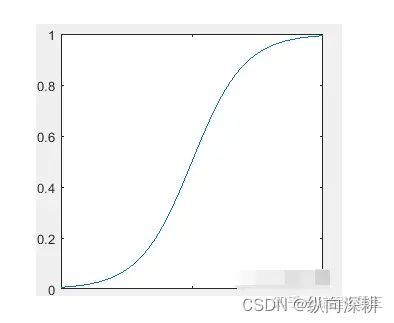- STM32第15天串口中断接收
Do vis824
单片机stm32嵌入式硬件
一:库函数实现串口接收软件流程设计初始化系统初始化GPIO、串口外设、LED时钟初始化串口和LED引脚串口发送控制LED灯usart.c#include"stm32f10x.h"#include"usart.h"#include"stdio.h"voidmy_usart_Init()//千万不要和32库里面串口定于的名字一样,不然会报错{GPIO_InitTypeDefUsart_Initstru
- STM32第十四天串口
一:串口发送字符和字符串和printf重定向usart.c#include"stm32f10x.h"#include"usart.h"#include"stdio.h"voidmy_usart_Init()//千万不要和32库里面串口定于的名字一样,不然会报错{GPIO_InitTypeDefmy_usart_Initstruct;USART_InitTypeDefUSART_Initstruct
- TMC4361A 使用(未验证)
m0_55576290
嵌入式工作一二三单片机嵌入式硬件嵌入式
prompt我用STM32F103C8T6来控制TMC4361A运动控制芯片,我配置STM32F103C8T6的SPI1与TMC4361A进行通信,配置PA4作为片选线,配置PA8作为RCC_MCO输入时钟输入到TMC4361A,并将其连接到TMC4361A的CLK_EXT引脚。我想控制TMC4361A,你要认真仔细阅读TMC4361A的手册,然后帮我实现控制。主要功能:硬件配置:SPI1配置(P
- STM32串口通信详解
晟盾科技
嵌入式开发stm32嵌入式硬件单片机
1.引言STM32是一款广泛使用的32位微控制器,以其高性能、低功耗和丰富的外设而著称。串口通信(UART/USART)是STM32中最常用的通信方式之一,用于实现与计算机或其他设备的简单数据交换。本文将详细介绍如何在STM32上配置和使用串口通信。2.基本概念2.1UARTvsUSART•UART(UniversalAsynchronousReceiver-Transmitter):通用异步收发
- STM32中的UART详解
前言在嵌入式开发中,串口通信是最常用的调试与数据传输方式之一。UART(UniversalAsynchronousReceiver/Transmitter,通用异步收发传输器)作为一种简单、可靠的异步通信协议,被广泛应用于STM32与传感器、上位机、蓝牙模块等外设的交互场景。本文将从协议基础到STM32实战,全面解析UART协议在STM32中的应用,包含硬件设计、软件配置、实战案例及调试技巧,适合
- 学Simulink——整流器场景:基于Simulink的单相全桥可控硅整流器仿真建模
xiaoheshang_123
MATLAB开发项目实例1000例专栏手把手教你学MATLAB专栏simulinkmatlab
目录手把手教你学Simulink——整流器场景:基于Simulink的单相全桥可控硅整流器仿真建模一、背景介绍二、系统结构设计三、建模过程第一步:创建新Simulink项目第二步:添加主要模块1.交流电源2.单相全桥可控硅整流器3.LC滤波器4.负载模拟5.触发脉冲生成模块6.测量模块第三步:搭建主电路拓扑第四步:搭建触发脉冲生成逻辑1.设计触发脉冲逻辑2.集成至Simulink模型四、参数设置五
- STM32通用定时器PWM波输出1
zp7541
stm32基本知识stm32电子
STM32通用定时器PWM波输出1一、简介根据STM32中文参考手册,完成STM32通用定时器的PWM输出代码。二、1.STM32中文参考手册的PWM部分三、代码的编写1.先使能TIM3定时器voidPWM1_init(u16arr,u16psc){RCC->APB1ENR|=1APB2ENR|=1CRL&=0xffffff00;//PB0PB1GPIOB->CRL|=0x000000bb;3.脉
- STM32 开发笔记:从环境搭建到任务调度
嵌入式的小萌新
stm32笔记嵌入式硬件
今天体验了一把augment确实好用,记录一下STM32开发笔记:从环境搭建到任务调度️环境准备必需工具STM32CubeMX:图形化配置工具,用于初始化MCU外设和生成基础代码STM32CubeCLT:包含编译工具链(arm-none-eabi-gcc)和烧录工具(STM32_Programmer_CLI)CMake:跨平台构建系统,用于管理项目编译流程OpenOCD:开源调试器(可选,用于DA
- 单片机物联网应用中的 Pogopin、串口与外围模组通信技术解析
麦德泽特
单片机物联网嵌入式硬件人工智能系统安全
引言在物联网蓬勃发展的当下,单片机作为关键的嵌入式设备核心,承担着数据采集、处理与控制的重任。而在单片机构建的物联网系统中,高效可靠的通信至关重要。Pogopin接口、串口通信以及各类外围模组的协同工作,为单片机与外部设备、网络之间搭建起了信息交互的桥梁。深入了解和掌握这些技术,对于优化物联网应用、提升系统性能具有重要意义。Pogopin接口:实现便捷连接1.1Pogopin原理与结构Pogopi
- STM32(X)精简库解读CMSIS
概述CMSIS全称为CommonMicrocontrollerSoftwareInterfaceStandard(通用微控制器软件接口标准),点此参考官方解读精简库CMSIS文件夹结构core:CMSISCortex-M3核心外设访问层源文件startup:启动文件stm32f10x.h:CMSISCortex-M3设备外设访问层头文件。这个文件包含了所有外设寄存器的定义,位定义和内存映射的STM
- STM32-内存运行原理与RAM执行实战
东方少爷
内存地址单片机嵌入式硬件arm开发硬件工程stm32
一、底层原理深度解析(先懂“为什么要拷贝”)1.存储介质本质差异(ROM/FlashvsRAM)ROM(以STM32内部Flash为例):物理特性:电可擦写非易失性存储(虽叫ROM,实际可通过编程改写),擦写次数有限(一般万次级别),读速度慢(STM32F1系列Flash读取周期约30-50ns)。存储内容:程序代码(指令)、只读常量(const修饰的全局变量、字符串字面量)、初始化的全局变量(R
- STM32-架构分层与CMSIS实战指南
东方少爷
单片机单片机嵌入式硬件架构stm32硬件工程
从架构分层逻辑、CMSIS核心价值、内核与CMSIS协作关系三个维度,结合代码示例深度解析,并延伸到工程应用:一、STM32库架构分层解析(从硬件到应用)图中架构分为MCU层、CMSIS层、用户层,每层职责和文件分工明确:1.MCU层(硬件基础)包含内容:Cortex-M内核(如Cortex-M4)、SysTick、NVIC、调试模块、片上外设(GPIO、USART等)。作用:提供物理硬件能力,是
- 基于STM32设计的智能喂养系统(ESP8266+微信小程序)175
DS小龙哥
智能家居与物联网项目实战stm32微信小程序嵌入式硬件智能喂养系统投喂系统
基于STM32设计的牛羊喂养系统(微信小程序)(175)文章目录一、前言1.1项目介绍【1】项目功能介绍【2】项目硬件模块组成【3】ESP8266工作模式配置【4】上位机开发【5】项目模块划分1.2项目功能需求1.3项目开发背景1.4开发工具的选择1.5系统框架图1.6系统原理图1.7硬件实物图二、硬件选型2.1STM32开发板2.3PCB板2.4蜂鸣器模块2.5USB下载线2.6水位传感器(2个
- 单片机:STM32F103的开发环境搭建
InnoLink_1024
单片机嵌入式单片机stm32嵌入式硬件
本文将详细介绍如何搭建STM32F103的开发环境。STM32F103是STMicroelectronics推出的一款基于ARMCortex-M3内核的32位微控制器(MCU),广泛应用于嵌入式开发。以下是搭建开发环境的详细步骤,涵盖硬件准备、软件安装、工具链配置及简单的开发示例。1.硬件准备在搭建STM32F103开发环境之前,需要准备以下硬件:STM32F103开发板:常见型号包括STM32F
- 单片机:STM32F103的架构
STM32F103是STMicroelectronics推出的一款基于ARMCortex-M3内核的32位微控制器(MCU),属于STM32F1系列,广泛应用于工业控制、汽车电子、消费电子等领域。以下是对STM32F103架构的详细介绍,涵盖其核心、存储器、总线、外设及关键特性,旨在提供全面且清晰的说明。1.总体架构概述STM32F103采用ARMCortex-M3内核,结合ST的定制化外设和存储
- 基于STM32C8T6的智能小车
陌沫不是momo
stm32arm开发单片机
有幸赶上了今年的电赛,赛前用了一周多的时间准备迷宫小车赛题,苦于摄像头刚刚入门并不能实际应用,只能用红外传感器做出个半成品。制作小车的硬件清单:(1)小车框架小车底层版*1、顶层版*1、面包板*2、、车轮*2、万向轮*1(2)小车设备STM32C8t6核心板*1、TB6612电机驱动*1、0.96OLED、JDY-31蓝牙模块、TCRT5000红外摄像头*6、电池、电机(带编码器)*2一、小车框架
- stm32c8t6工程,使用hal库,如何解决?
bug菌¹
全栈Bug调优(实战版)stm32嵌入式硬件单片机c语言
本文收录于《全栈Bug调优(实战版)》专栏,主要记录项目实战过程中所遇到的Bug或因后果及提供真实有效的解决方案,希望能够助你一臂之力,帮你早日登顶实现财富自由;同时,欢迎大家关注&&收藏&&订阅!持续更新中,up!up!up!!全文目录:问题描述解决方案1.**分析报错问题**2.**蓝牙通信处理的中断机制**代码示例:蓝牙数据接收中断处理3.**倒计时功能实现**4.**舵机控制**5.**O
- 基于STM32F103C8T6的超声波测距开发详解:从接线到精确测量的完整指南
快撑死的鱼
硬件算法实践stm32嵌入式硬件单片机
基于STM32F103C8T6的超声波测距开发详解:从接线到精确测量的完整指南引言超声波测距技术是一种基于超声波的传播时间来测量目标物体与传感器之间距离的技术。由于其测量精度高、成本低、易于实现,广泛应用于机器人避障、自动停车、液位测量等领域。STM32F103C8T6是一款基于ARMCortex-M3内核的高性能微控制器,凭借其丰富的外设和强大的处理能力,成为嵌入式开发中常用的选择。本文将通过一
- 【STM32项目】基于Stm32c8t6-镭射激光打印机的设计(完整工程资料源码)
物联网设计-妄北y
物联网嵌入式开发项目课程设计stm32嵌入式硬件单片机镭射打印机机器设计嵌入式开发
基于Stm32c8t6-镭射激光打印机的设计演示效果基于STM32-镭射激光打印机的设计前言:随着打印技术的快速发展,镭射打印技术也开始得到越来越广泛的应用。这种技术可以被用于在木材、塑料、皮革、织物等各种材料上进行图形打印,并且通常比传统机器更快、更准确和更灵活。目录:目录基于Stm32c8t6-镭射激光打印机的设计演示效果前言:目录:一、系统方案1.1项目背景1.2项目目标1.3需求分析1.4
- 【ESP32-IDF笔记】08-SD(SDMMC)卡配置和使用
@Hwang
ESP32-IDF笔记#ESP32#ESP32-IDF#ESP32S3SD卡SDMMC
目录配置环境SDMMC主机驱动概述支持的速率模式使用SDMMC主机驱动配置总线宽度和频率配置GPIOeMMC芯片的DDR模式相关文档API参考头文件功能函数初始化SDMMC主机外围设备初始化SDMMC外设的给定插槽选择要用于数据传输的总线宽度获取配置为用于数据传输的总线宽度设置卡时钟频率启用或禁用SD接口的DDR模式启用或禁用永远开启的卡时钟发送数据启用IO中断等待IO中断禁用SDMMC主机并正常
- 利用 SoC 架构信息 (SAI) 创建自动网表的解析
weixin_45371279
innovus
基于SAI(SoCArchitectureInformation)创建网表是在无完整电路网表时启动物理设计的关键技术,通过解析架构描述并生成等效网表,使Innovus能够执行布局规划与分析。以下是核心功能与实现逻辑的详细说明:一、SAI自动网表生成的技术背景与目标当设计早期缺乏RTL或门级网表时,SAI自动网表生成通过抽象模型具体化的方式,将架构描述转换为物理设计工具可识别的网表结构,实现:提前启
- 嵌入式入门学习——5了解寄存器如何控制单片机
星火嵌入式
嵌入式入门学习单片机
0系列文章入口嵌入式入门学习——0快速入门,Let‘sDoIt!1.内容简介武侠的内功和招式之间的关系类似于编程中的技术和计算原理之间的关系。招式是千变万化的,而内功心法则稳定而深厚。内功心法的深度决定了可以学习的招式变术的上限高度。单片机的控制最终是要落实到寄存器上的。使用库函数或者使用高级语言是招式,了解单片机的寄存器则是内功。2.引言练习武功讲究内外兼修,一味学习技巧,而忽略本质的结果就是一
- 扒开嵌入式硬件的底裤(上)!从 PCB 到 FPGA/IC 设计,小白到 CTO 的必学秘籍 硬核知识点全揭秘!从c语言入门到mcu与arm架构及外设相关
small_wh1te_coder
嵌入式内核嵌入式开发嵌入式硬件算法c汇编面试驱动开发单片机
【硬核揭秘】嵌入式硬件工程师的“底裤”:从入门到牛逼,你必须知道的一切!第一部分:破冰与认知——嵌入式硬件工程师的“世界观”嘿,各位C语言老铁,以及所有对“让硬件听你话”充满好奇的朋友们!我是你们的老朋友,一个常年“折腾”在代码和电路板之间的码农。今天,咱们要聊一个真正能让你“硬”起来的话题——如何成为一个合格、优秀、牛逼的嵌入式硬件工程师!你可能正坐在电脑前,敲着C语言代码,刷着力扣算法题,心里
- 匿名科创无人机学习心得
heng6868
嵌入式项目物联网网络iot
*1.*飞控stm32串口5连接imu,串口五发送的指令会发送到imu中,如果是自定义的用户格式帧(比如:AAFFF103010101A067)会先到imu,imu的串口1接stm飞控。串口2接数传,从串口1接收到的数据会通过串口二发送给数传,数传传给另一个数传,在通过USB线传输给上位机。但是如果不是属于用户自定义的格式帧,imu会进行处理,比如飞控串口5一上电就会输出电池信息(如:AAFF0D
- STM32定时器详细教程
楠离啊
c语言stm32嵌入式硬件单片机
STM32定时器1.引言STM32微控制器以其丰富的外设和强大的性能,在嵌入式领域得到了广泛应用。其中,定时器作为其核心外设之一,在实现精确时间控制、波形生成、事件测量等方面发挥着不可替代的作用。本教程将深入探讨STM32定时器的分类、工作原理、主要寄存器配置以及常见应用,旨在帮助读者全面理解并熟练运用STM32定时器。2.STM32定时器分类STM32系列微控制器通常包含以下三类定时器:基本定时
- MMORPG无loading条大世界技术揭秘
你一身傲骨怎能输
游戏开发技术专栏mmorpg
文章摘要现代MMORPG游戏实现无loading条大世界的核心技术包括:分区流式加载、异步多线程处理、LOD渐进式资源加载、智能内存管理等。主流方案将地图划分为可独立加载的区块,通过异步IO和优先级队列动态管理资源,结合预取机制和资源降级确保流畅体验。典型案例如《原神》《魔兽世界》等采用混合加载模式,核心场景预加载,外围区域动态加载。这些技术虽提升了游戏体验,但也对资源组织和内存管理提出了更高要求
- STM32F103RCTx的PWM输出控制电机
关键功能说明PWM配置:使用TIM1生成500HzPWM信号输出引脚:PA8(TIM1_CH1)计数器设置:预分频72-1(1MHz时钟),周期1999(500Hz)初始占空比:50%(CCR=1000)按键处理:使用TIM2定时器中断实现按键扫描(10ms间隔)UP键(PA0):增加占空比DOWN键(PA1):减少占空比按键消抖:30ms确认按下(3次扫描)长按支持:按键保持按下时,每200ms
- STM32开发方式及基本介绍
相关推荐STM32新建一个工程STM32的开发有三种方式1.寄存器版本2.库函数版本3.HAL库版本一、库函数开发与寄存器开发的关系很多人都是从学51单片机转而想进一步学习STM32,他们习惯了51单片机的寄存器开发方式,ST官方库摆在面前会不知道从何下手。其实简单来说,固件库就是函数的集合,固件库函数的作用是向下负责与寄存器直接打交道,向上提供用户函数调用的接口。举一个例子来解释STM32固件库
- STM32中断系统完全指南:从NVIC原理到实战应用
阿牛的药铺
STM32裸机开发stm32单片机嵌入式硬件
STM32中断系统完全指南:从NVIC原理到实战应用一、中断基础:嵌入式系统的"紧急通道"中断是STM32微控制器中最重要的机制之一,它允许处理器在正常运行程序时,对外部事件或内部条件做出即时响应。想象一下,当你正在看书时,突然电话铃声响起,你会先做个书签标记当前阅读位置,然后接听电话,通话结束后再回到原位置继续阅读——这就是中断的生动比喻。在STM32中,中断的工作流程可分为三个阶段:中断响应:
- 烧录成砖分享
Mr_-G
Linux底层软件开发编程入门烧录烧录成砖
一、烧录与“成砖”的基础概念界定1.1烧录的技术本质烧录(Programming)是将固件(Firmware)、系统镜像或程序代码写入电子设备存储介质的过程,其核心是通过特定通信协议(如USB、UART、SPI、I2C等)将二进制数据固化到芯片(如Flash、EEPROM、MCU内置存储)的指定地址空间。烧录的对象涵盖智能手机、路由器、单片机、主板BIOS、智能家电等几乎所有带处理器的设备,不同设
- C/C++Win32编程基础详解视频下载
择善Zach
编程C++Win32
课题视频:C/C++Win32编程基础详解
视频知识:win32窗口的创建
windows事件机制
主讲:择善Uncle老师
学习交流群:386620625
验证码:625
--
- Guava Cache使用笔记
bylijinnan
javaguavacache
1.Guava Cache的get/getIfPresent方法当参数为null时会抛空指针异常
我刚开始使用时还以为Guava Cache跟HashMap一样,get(null)返回null。
实际上Guava整体设计思想就是拒绝null的,很多地方都会执行com.google.common.base.Preconditions.checkNotNull的检查。
2.Guava
- 解决ora-01652无法通过128(在temp表空间中)
0624chenhong
oracle
解决ora-01652无法通过128(在temp表空间中)扩展temp段的过程
一个sql语句后,大约花了10分钟,好不容易有一个结果,但是报了一个ora-01652错误,查阅了oracle的错误代码说明:意思是指temp表空间无法自动扩展temp段。这种问题一般有两种原因:一是临时表空间空间太小,二是不能自动扩展。
分析过程:
既然是temp表空间有问题,那当
- Struct在jsp标签
不懂事的小屁孩
struct
非UI标签介绍:
控制类标签:
1:程序流程控制标签 if elseif else
<s:if test="isUsed">
<span class="label label-success">True</span>
</
- 按对象属性排序
换个号韩国红果果
JavaScript对象排序
利用JavaScript进行对象排序,根据用户的年龄排序展示
<script>
var bob={
name;bob,
age:30
}
var peter={
name;peter,
age:30
}
var amy={
name;amy,
age:24
}
var mike={
name;mike,
age:29
}
var john={
- 大数据分析让个性化的客户体验不再遥远
蓝儿唯美
数据分析
顾客通过多种渠道制造大量数据,企业则热衷于利用这些信息来实现更为个性化的体验。
分析公司Gartner表示,高级分析会成为客户服务的关键,但是大数据分析的采用目前仅局限于不到一成的企业。 挑战在于企业还在努力适应结构化数据,疲于根据自身的客户关系管理(CRM)系统部署有效的分析框架,以及集成不同的内外部信息源。
然而,面对顾客通过数字技术参与而产生的快速变化的信息,企业需要及时作出反应。要想实
- java笔记4
a-john
java
操作符
1,使用java操作符
操作符接受一个或多个参数,并生成一个新值。参数的形式与普通的方法调用不用,但是效果是相同的。加号和一元的正号(+)、减号和一元的负号(-)、乘号(*)、除号(/)以及赋值号(=)的用法与其他编程语言类似。
操作符作用于操作数,生成一个新值。另外,有些操作符可能会改变操作数自身的
- 从裸机编程到嵌入式Linux编程思想的转变------分而治之:驱动和应用程序
aijuans
嵌入式学习
笔者学习嵌入式Linux也有一段时间了,很奇怪的是很多书讲驱动编程方面的知识,也有很多书将ARM9方面的知识,但是从以前51形式的(对寄存器直接操作,初始化芯片的功能模块)编程方法,和思维模式,变换为基于Linux操作系统编程,讲这个思想转变的书几乎没有,让初学者走了很多弯路,撞了很多难墙。
笔者因此写上自己的学习心得,希望能给和我一样转变
- 在springmvc中解决FastJson循环引用的问题
asialee
循环引用fastjson
我们先来看一个例子:
package com.elong.bms;
import java.io.OutputStream;
import java.util.HashMap;
import java.util.Map;
import co
- ArrayAdapter和SimpleAdapter技术总结
百合不是茶
androidSimpleAdapterArrayAdapter高级组件基础
ArrayAdapter比较简单,但它只能用于显示文字。而SimpleAdapter则有很强的扩展性,可以自定义出各种效果
ArrayAdapter;的数据可以是数组或者是队列
// 获得下拉框对象
AutoCompleteTextView textview = (AutoCompleteTextView) this
- 九封信
bijian1013
人生励志
有时候,莫名的心情不好,不想和任何人说话,只想一个人静静的发呆。有时候,想一个人躲起来脆弱,不愿别人看到自己的伤口。有时候,走过熟悉的街角,看到熟悉的背影,突然想起一个人的脸。有时候,发现自己一夜之间就长大了。 2014,写给人
- Linux下安装MySQL Web 管理工具phpMyAdmin
sunjing
PHPInstallphpMyAdmin
PHP http://php.net/
phpMyAdmin http://www.phpmyadmin.net
Error compiling PHP on CentOS x64
一、安装Apache
请参阅http://billben.iteye.com/admin/blogs/1985244
二、安装依赖包
sudo yum install gd
- 分布式系统理论
bit1129
分布式
FLP
One famous theory in distributed computing, known as FLP after the authors Fischer, Lynch, and Patterson, proved that in a distributed system with asynchronous communication and process crashes,
- ssh2整合(spring+struts2+hibernate)-附源码
白糖_
eclipsespringHibernatemysql项目管理
最近抽空又整理了一套ssh2框架,主要使用的技术如下:
spring做容器,管理了三层(dao,service,actioin)的对象
struts2实现与页面交互(MVC),自己做了一个异常拦截器,能拦截Action层抛出的异常
hibernate与数据库交互
BoneCp数据库连接池,据说比其它数据库连接池快20倍,仅仅是据说
MySql数据库
项目用eclipse
- treetable bug记录
braveCS
table
// 插入子节点删除再插入时不能正常显示。修改:
//不知改后有没有错,先做个备忘
Tree.prototype.removeNode = function(node) {
// Recursively remove all descendants of +node+
this.unloadBranch(node);
// Remove
- 编程之美-电话号码对应英语单词
bylijinnan
java算法编程之美
import java.util.Arrays;
public class NumberToWord {
/**
* 编程之美 电话号码对应英语单词
* 题目:
* 手机上的拨号盘,每个数字都对应一些字母,比如2对应ABC,3对应DEF.........,8对应TUV,9对应WXYZ,
* 要求对一段数字,输出其代表的所有可能的字母组合
- jquery ajax读书笔记
chengxuyuancsdn
jQuery ajax
1、jsp页面
<%@ page language="java" import="java.util.*" pageEncoding="GBK"%>
<%
String path = request.getContextPath();
String basePath = request.getScheme()
- JWFD工作流拓扑结构解析伪码描述算法
comsci
数据结构算法工作活动J#
对工作流拓扑结构解析感兴趣的朋友可以下载附件,或者下载JWFD的全部代码进行分析
/* 流程图拓扑结构解析伪码描述算法
public java.util.ArrayList DFS(String graphid, String stepid, int j)
- oracle I/O 从属进程
daizj
oracle
I/O 从属进程
I/O从属进程用于为不支持异步I/O的系统或设备模拟异步I/O.例如,磁带设备(相当慢)就不支持异步I/O.通过使用I/O 从属进程,可以让磁带机模仿通常只为磁盘驱动器提供的功能。就好像支持真正的异步I/O 一样,写设备的进程(调用者)会收集大量数据,并交由写入器写出。数据成功地写出时,写入器(此时写入器是I/O 从属进程,而不是操作系统)会通知原来的调用者,调用者则会
- 高级排序:希尔排序
dieslrae
希尔排序
public void shellSort(int[] array){
int limit = 1;
int temp;
int index;
while(limit <= array.length/3){
limit = limit * 3 + 1;
- 初二下学期难记忆单词
dcj3sjt126com
englishword
kitchen 厨房
cupboard 厨柜
salt 盐
sugar 糖
oil 油
fork 叉;餐叉
spoon 匙;调羹
chopsticks 筷子
cabbage 卷心菜;洋白菜
soup 汤
Italian 意大利的
Indian 印度的
workplace 工作场所
even 甚至;更
Italy 意大利
laugh 笑
m
- Go语言使用MySQL数据库进行增删改查
dcj3sjt126com
mysql
目前Internet上流行的网站构架方式是LAMP,其中的M即MySQL, 作为数据库,MySQL以免费、开源、使用方便为优势成为了很多Web开发的后端数据库存储引擎。MySQL驱动Go中支持MySQL的驱动目前比较多,有如下几种,有些是支持database/sql标准,而有些是采用了自己的实现接口,常用的有如下几种:
http://code.google.c...o-mysql-dri
- git命令
shuizhaosi888
git
---------------设置全局用户名:
git config --global user.name "HanShuliang" //设置用户名
git config --global user.email "
[email protected]" //设置邮箱
---------------查看环境配置
git config --li
- qemu-kvm 网络 nat模式 (四)
haoningabc
kvmqemu
qemu-ifup-NAT
#!/bin/bash
BRIDGE=virbr0
NETWORK=192.168.122.0
GATEWAY=192.168.122.1
NETMASK=255.255.255.0
DHCPRANGE=192.168.122.2,192.168.122.254
TFTPROOT=
BOOTP=
function check_bridge()
- 不要让未来的你,讨厌现在的自己
jingjing0907
生活 奋斗 工作 梦想
故事one
23岁,他大学毕业,放弃了父母安排的稳定工作,独闯京城,在家小公司混个小职位,工作还算顺手,月薪三千,混了混,混走了一年的光阴。 24岁,有了女朋友,从二环12人的集体宿舍搬到香山民居,一间平房,二人世界,爱爱爱。偶然约三朋四友,打扑克搓麻将,日子快乐似神仙; 25岁,出了几次差,调了两次岗,薪水涨了不过百,生猛狂飙的物价让现实血淋淋,无力为心爱银儿购件大牌
- 枚举类型详解
一路欢笑一路走
enum枚举详解enumsetenumMap
枚举类型详解
一.Enum详解
1.1枚举类型的介绍
JDK1.5加入了一个全新的类型的”类”—枚举类型,为此JDK1.5引入了一个新的关键字enum,我们可以这样定义一个枚举类型。
Demo:一个最简单的枚举类
public enum ColorType {
RED
- 第11章 动画效果(上)
onestopweb
动画
index.html
<!DOCTYPE html PUBLIC "-//W3C//DTD XHTML 1.0 Transitional//EN" "http://www.w3.org/TR/xhtml1/DTD/xhtml1-transitional.dtd">
<html xmlns="http://www.w3.org/
- Eclipse中jsp、js文件编辑时,卡死现象解决汇总
ljf_home
eclipsejsp卡死js卡死
使用Eclipse编辑jsp、js文件时,经常出现卡死现象,在网上百度了N次,经过N次优化调整后,卡死现象逐步好转,具体那个方法起到作用,不太好讲。将所有用过的方法罗列如下:
1、取消验证
windows–>perferences–>validation
把 除了manual 下面的全部点掉,build下只留 classpath dependency Valida
- MySQL编程中的6个重要的实用技巧
tomcat_oracle
mysql
每一行命令都是用分号(;)作为结束
对于MySQL,第一件你必须牢记的是它的每一行命令都是用分号(;)作为结束的,但当一行MySQL被插入在PHP代码中时,最好把后面的分号省略掉,例如:
mysql_query("INSERT INTO tablename(first_name,last_name)VALUES('$first_name',$last_name')");
- zoj 3820 Building Fire Stations(二分+bfs)
阿尔萨斯
Build
题目链接:zoj 3820 Building Fire Stations
题目大意:给定一棵树,选取两个建立加油站,问说所有点距离加油站距离的最大值的最小值是多少,并且任意输出一种建立加油站的方式。
解题思路:二分距离判断,判断函数的复杂度是o(n),这样的复杂度应该是o(nlogn),即使常数系数偏大,但是居然跑了4.5s,也是醉了。 判断函数里面做了3次bfs,但是每次bfs节点最多
![]()

